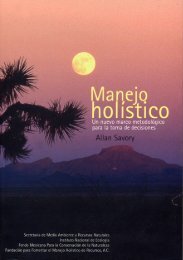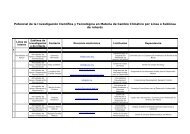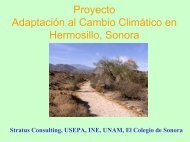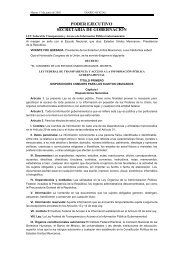Modeling deforestation baselines using GEOMOD - Instituto ...
Modeling deforestation baselines using GEOMOD - Instituto ...
Modeling deforestation baselines using GEOMOD - Instituto ...
Create successful ePaper yourself
Turn your PDF publications into a flip-book with our unique Google optimized e-Paper software.
Finalizing Avoided Deforestation Baselines<br />
Millones de ton de Carbono<br />
5.00<br />
4.50<br />
4.00<br />
3.50<br />
3.00<br />
2.50<br />
2.00<br />
1.50<br />
1.00<br />
0.50<br />
Oyamel Forest<br />
Forest Plantation<br />
Oak Forests<br />
Pine Forests<br />
Pine-Oak Forest<br />
0.00<br />
2000 2005 2010 2015 2020 2025 2030<br />
Year<br />
Figure 26. Cumulative carbon emissions from <strong>deforestation</strong> in the Meseta Purepecha. Over the<br />
30-year period, about 4.6 million tons of carbon would be emitted.<br />
Over the 30 year period, 83,717 ha of forest cover was projected to be converted to non-forest uses in the<br />
region, emitting about 4.6 million tons of carbon.<br />
VI.<br />
Conclusions<br />
Spatial modeling tools have allowed us to evaluate the empirical rate of land-use change and<br />
corresponding changes in carbon stocks in the States of Campeche and Michoacan. They<br />
have also provided the means to study the dynamics between land use/land cover types over<br />
time. The results show that a projected baseline for <strong>deforestation</strong> in Meseta Purépecha<br />
would result in about an additional 87,000 ha of loss in forest cover with a corresponding<br />
carbon emissions of 4.6 million t C. The projected baseline for the Calakmul region of<br />
Campeche shows a further loss of 273,000 ha of forest and a corresponding net carbon<br />
emissions of 8.9 million t C.<br />
Without <strong>GEOMOD</strong> we would not have been able to specify the location of projected<br />
<strong>deforestation</strong> in the regions. We hypothesized that <strong>using</strong> <strong>GEOMOD</strong> would allow us to<br />
estimate carbon emissions with greater certainty than can be done with a simple baseline<br />
prediction. <strong>GEOMOD</strong> provides more accurate carbon estimates because of the model’s<br />
spatial specificity, 2) provides the ability to model regional and project-specific ‘withoutproject’<br />
scenarios in one pass, and 3) removes some of the uncertainty inherent in all<br />
modeling, whether spatial or non-spatial, by its strict adherence to the use of the kappa-forlocation<br />
statistic applied to empirical patterns of land use change<br />
Winrock International<br />
A- 44





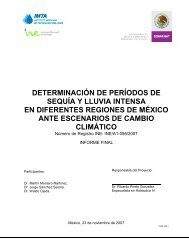

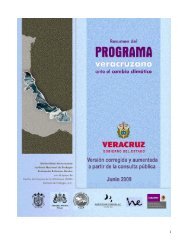
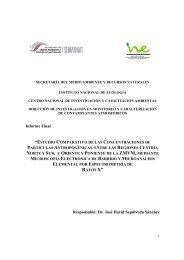

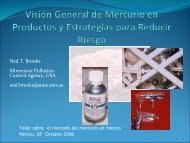
![John Ganzi [Modo de compatibilidad]](https://img.yumpu.com/22669860/1/190x132/john-ganzi-modo-de-compatibilidad.jpg?quality=85)

